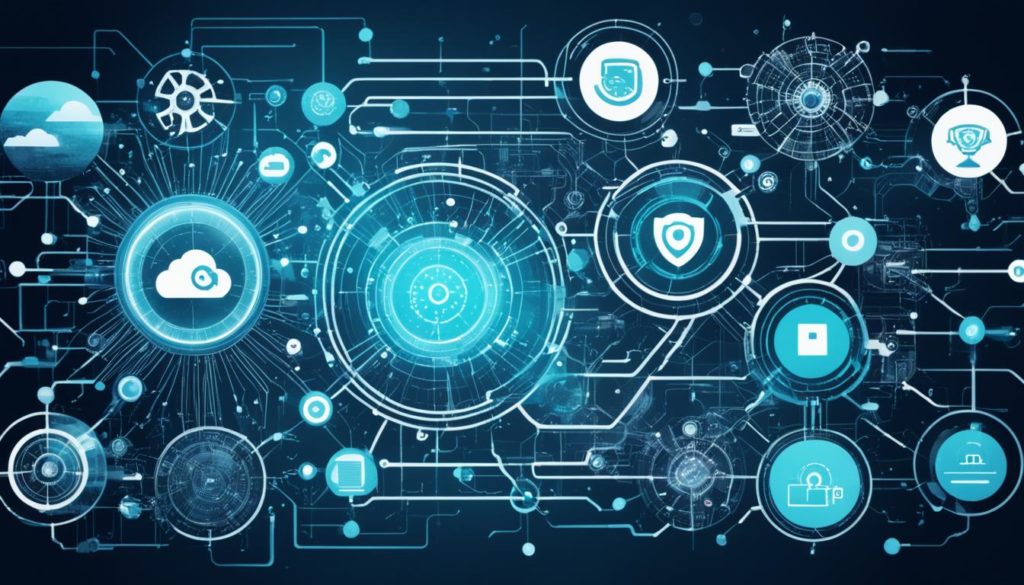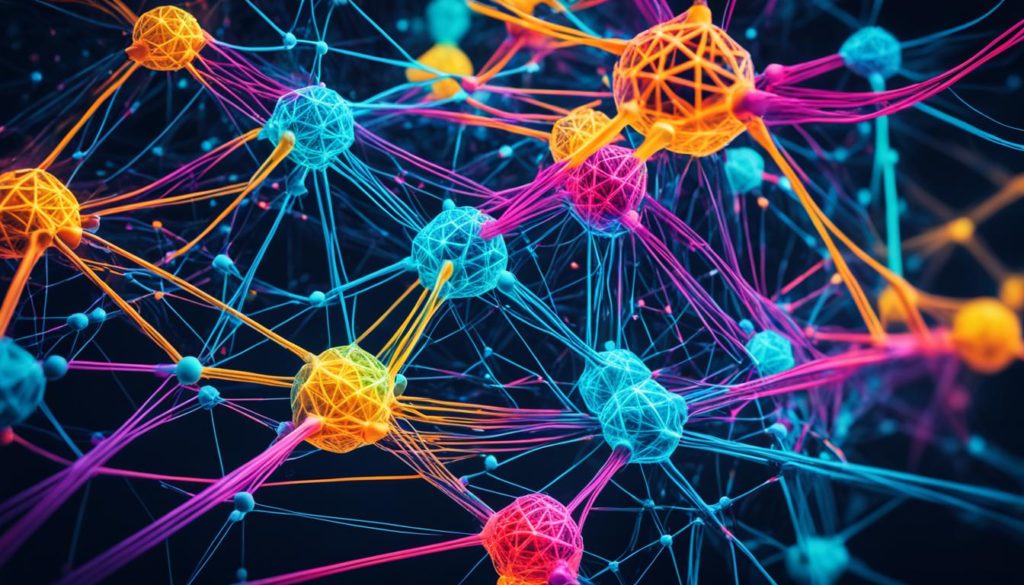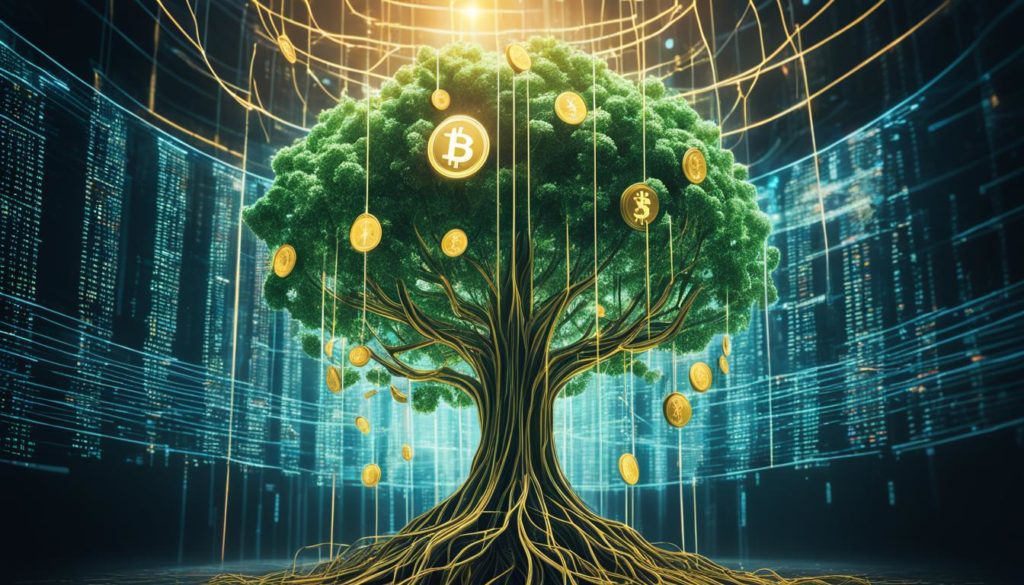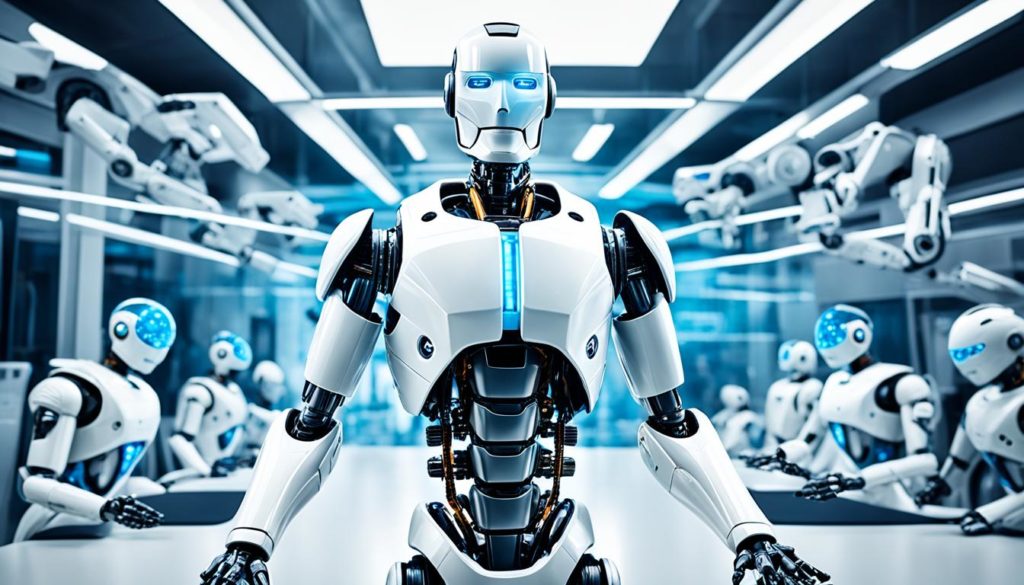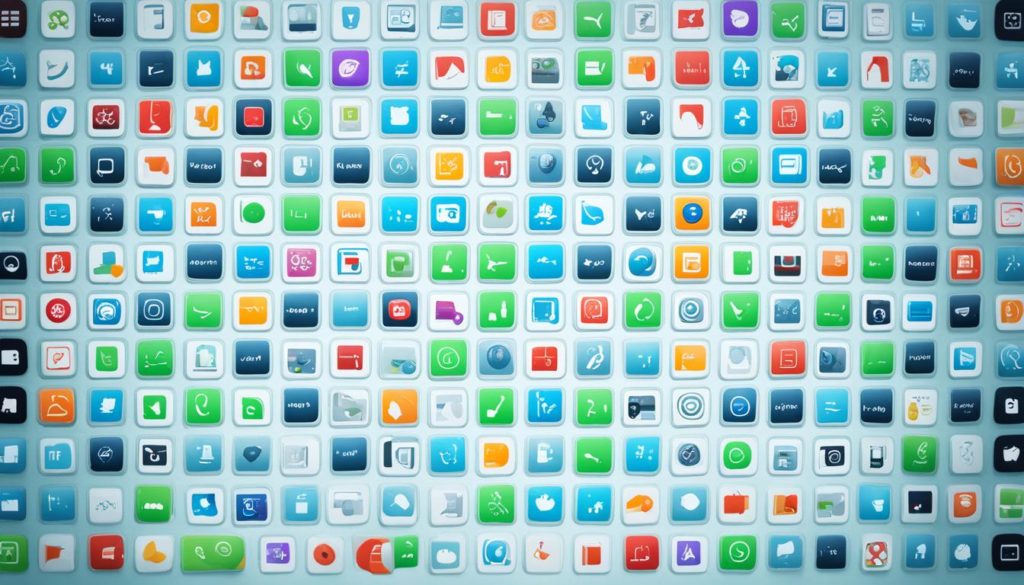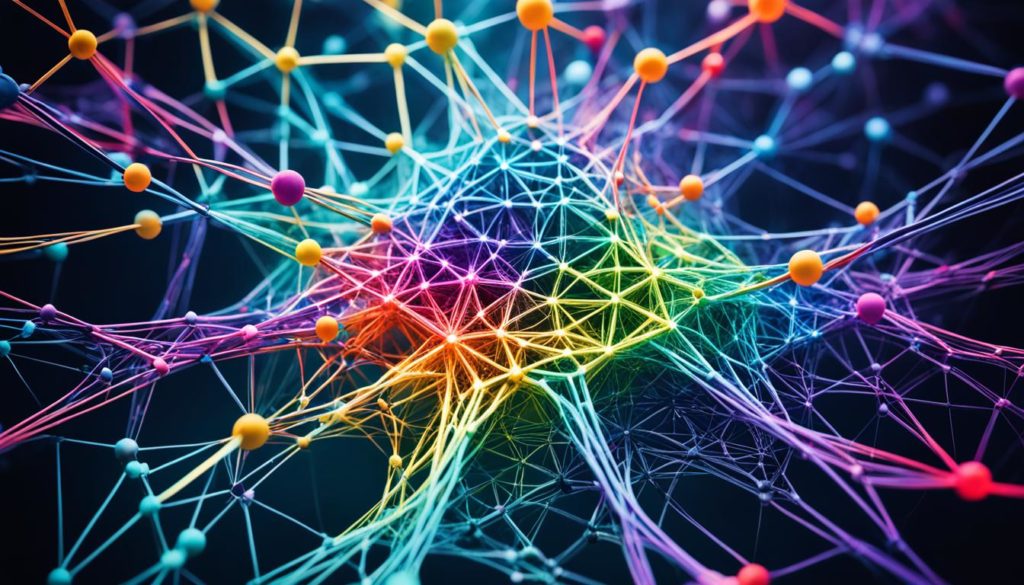
Many organizations are tied down by old systems, making it hard to embrace new tech. But, Generative AI Legacy Systems are changing the game in AI transformation. They bring a new era of efficiency and competitive edge. As Advanced AI applications expand, leaders are making sure old systems help, not hinder, innovation.
About one-third of organizations already use Generative AI in some operations. This shows it’s a crucial move for staying relevant. Especially as STEM jobs expect a 23% increase by 2030, driven by AI.
Key Takeaways
- Incorporating Generative AI is pivotal for modern competitiveness.
- Legacy system modernization paves the way for increased business agility.
- Generative AI applications provide substantial cost savings and productivity boosts.
- Sectoral job growth attributed to AI adoption signals shifting market dynamics.
- Global economies are set to benefit from productivity increases due to AI integration.
The Emerging Role of Generative AI in Modernizing Legacy Systems
Companies are now embracing AI transformation. The leap to Generative AI Legacy Systems is pivotal for businesses stuck with old tech. By adopting Generative AI for Legacy system integration, a big leap in system efficiency and smarts is occurring. This change is seen as a big deal by those leading the way in innovation.
Generative AI is making digital modernization easier. This change is especially important for upgrading old systems, a major task mentioned by McKinsey. It’s about more than just saving time. It combines human creativity with AI’s wide abilities. A huge 93 percent of businesses still rely on old mainframes for essential financial operations.
Generative AI is an ally in deciphering the complex language of the past, offering a bridge to the future where speed and adaptability are paramount.
AI is also making developers more productive. For instance, FPT Software’s Maia shows how a conversational interface can help in coding, shortening the time spent on documentation and testing2. The way we collaborate is evolving too. Partnerships, like those with Mila and Landing AI, push forward Responsible AI and new AI transformation ideas across different fields.
| Partnership | Focus Area | Benefit |
|---|---|---|
| Mila & FPT Software | Responsible AI | Real-world AI product development |
| Landing AI | Computer Vision | Quality inspection solutions |
| Aitomatic | Industrial AI | Advanced AI for industries |
Today, over 70 percent of top firms rely on the power of mainframes. With Generative AI, these firms gain a big advantage, balancing risks carefully. It offers a smooth way to get everyone involved in the digital world.
Adding Generative AI to old systems changes everything. It’s about transforming our tech use to meet today’s digital and connected world.
Unleashing Business Agility Through Generative AI
In today’s fast-paced business world, staying agile with technology is key to staying ahead. Generative AI is reshaping the game by boosting this agility. It’s more than just a tool for coders. It’s a smart way to balance being efficient and innovative simultaneously. By using Generative AI, companies can dodge extra costs and stay ahead of their competitors.
The Costs and Risks of Stagnation
Old, outdated code can make companies too scared to move forward. But Generative AI, like a Design Guru, makes understanding complicated systems easier. It tackles the old ways head-on with automation and code translation tools, modernizing RPA and supply chains3. AI impacts various sectors deeply, changing how we handle operations and engage with customers. This sets new standards for success3.
Architectural Revitalization with AI
Generative AI is reviving business architectures by smartly reworking code and business outlooks. Machine learning is crucial in this change, helping firms adopt agile architectural designs and process efficiencies. It’s more than just an update tool; it’s a vision for the future, keeping businesses at the forefront of tech and market trends. This new era combines adaptation and vision to build lasting, forward-looking systems.
How Generative AI Optimizes Legacy Application Workflows
Generative AI is changing the game for old systems. It’s making data migration and workflow better and faster. By updating old apps, companies can save about 38% in development time. This speeds up product launches and cuts down on work stoppages. Using Natural Language Processing, Generative AI can understand and fix complex codes. This makes updating old systems easier and more effective.
Companies are seeing big changes in workflow management thanks to Generative AI. FPT Software’s AI, named Maia, helps with coding and co-programming. This boosts productivity and makes developing programs better. Also, using Generative AI in cloud systems helps keep IT performance stable. It makes expanding services easier too.
In old systems, finding experts who know languages like Cobol is hard. Generative AI helps more engineers work on updating and migrating systems. It’s not just about moving things around. It’s about building a system that keeps getting better. Generative AI automates tasks like making reports and maintenance. This shapes a future where optimizing workflows is part of the system.
An integrated hybrid cloud with generative AI automation can lead to cost savings, efficiency improvements, enhanced IT performance, and rapid service scaling.
The future of old applications is about using business knowledge smartly to innovate. IBM and its AI tools like Watson Assistant are leading by providing solutions that protect privacy while keeping quality and security7. With companies like FPT Software working with IBM on AI that’s used responsibly, it’s clear that modernizing old applications is being done thoughtfully. There’s a focus on innovation, teamwork, and social responsibility.
Transforming Legacy Code Understanding with Natural Language Processing
The rise of Natural Language Processing (NLP) in AI marks a new era in legacy code study. It uses advanced NLP methods to understand old codebases. This marks a big step in AI transformation, making tough tasks easier to handle.
Legacy Code Analysis with AI
AI tools, like the groundbreaking Gemini model, change how we deal with old code. It helps developers improve their work with better speed and quality8. NLP makes it possible for machines to break down and explain complex code in simple terms.
From Code Translation to Intelligent Refactoring
AI is changing code conversion and becoming key in smart refactoring. The Gemini Code Assist tool supports developers, pushing code into the future. This AI assistant aids in making smart coding choices, taking AI Code Translator beyond just translating.
For companies evolving digitally, AI modernisation consultation is essential. Stories from FOX Sports and GE Appliances show how Vertex AI boosts business. GitLab and Google Cloud’s teamwork shows a shared AI ecosystem is the future.
For those new to generative AI, incentives like $300 in free credits are a good start. The Gen AI Navigator helps quickly adopt generative AI strategies in businesses.
Today’s changes, led by AI transformation and new language models, hint at a future where old systems inspire innovation. It’s a time when Intelligent refactoring and AI insights join to make work smoother, stronger, and in tune with changing business needs.
Enhancing System Integration with Machine Learning Technology
In the world of system integration, Generative AI changes how old systems work together. It makes connections better by using new machine learning tech. Merging new functions with old ones is tough, but it’s easier now. Google’s Gemini helps integrate systems smoothly. It understands and makes different outputs. With Google’s AI, big names like FOX Sports and Wendy’s blend new tech into old systems without problems.
Automation gets a big boost from AI. This helps businesses make their operations modern. Generative AI could add up to $4.4 trillion to the world’s economy. It makes workers free from daily tasks. Now, they can do more important stuff. Machine learning also makes moving data safer and less error-prone.
Using advanced AI helps companies stay up-to-date. It prepares them for new inventions too. Google Cloud gives $300 in free credits. It’s great for those ready to explore AI. This offer gives access to top tools like Gemini Code Assist. With these tools, companies improve their systems with the newest in automation and data migration.
FAQ
What are Generative AI Legacy Systems?
Generative AI Legacy Systems mix AI tools with old systems to modernize them. Their aim is to make businesses’ outdated systems adapt and improve using AI. This helps make operations more efficient and ready for the future.
How does Generative AI facilitate Legacy system integration?
Generative AI makes it easier to upgrade old systems. It automates code analysis and predicts how changes affect the system. It helps by suggesting improvements and making integration smoother.
What are the benefits of using Generative AI for AI transformation?
Using Generative AI speeds up system updates and cuts maintenance costs. It helps businesses become more agile. This lets them stay ahead with the latest technology and compete better.
Can Generative AI mitigate the cost drain associated with maintaining old systems?
Yes, Generative AI lowers the costs of old systems. It does this by making code better, needing less specialized knowledge, and moving to cheaper, modern technology.
How does Generative AI contribute to reducing competitive risk?
Generative AI helps businesses update quickly and innovate continuously. It lets them change as the market does, keeping them ahead of competitors with older tech.
In what ways can Generative AI optimize workflow in legacy applications?
Generative AI enhances legacy applications by fixing complex processes and automating tasks. It also improves how data is moved, leading to better and more dependable workflows.
How does Natural Language Processing (NLP) transform legacy code understanding?
NLP within Generative AI helps quickly understand old code. It provides clear documentation and insights, making it easier to update the system.
What role does Generative AI play in intelligent refactoring?
Generative AI uses machine learning for smart code updates. It suggests architectural changes and replaces outdated code, following new best practices.
What is involved in system integration using Machine Learning technology?
Integrating systems with Machine Learning links different parts smoothly and predicts outcomes. This leads to stronger, more adaptable systems.
Future App Studios is an award-winning software development & outsourcing company. Our team of experts is ready to craft the solution your company needs.


